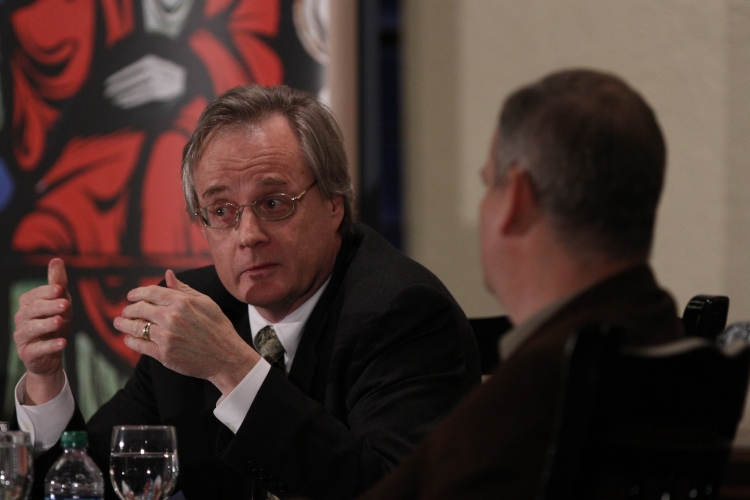
By Kathleen Sullivan | Chronicle Staff
Editors of the country’s leading Catholic periodicals recently gathered in Gasson 100 to discuss their role and their future as part of the panel discussion, “The Future of Catholic Periodicals: Faith, Finances and the Digital Age,” co-sponsored by the Church in the 21st Century Center and the Boisi Center for Religion and American Public Life.
Moderated by National Catholic Reporter Editor-at-large Tom Roberts, the Feb. 20 event featured Commonweal Editor Paul Baumann, US Catholic Executive Editor Meinrad Sherer-Emunds and Matt Malone, SJ, editor-in-chief of America magazine, a national weekly magazine published by the Jesuits.
“It’s our task to keep people who are already interested in Catholicism informed and engaged,” said Fr. Malone.
But the panelists acknowledged the very real challenges they face.
The demographics are “quite frightening,” said Baumann of Commonweal, an independent publication focused on the interaction of faith with politics and culture. “[Our] readership is mature.”
“Certainly, all of us are struggling to remain relevant to a younger generation. We do more and more online…so the whole conversation is changing,” said Sherer-Emunds, whose monthly publication, US Catholic, is seen as a bridge between the academy and the Catholics in the pew. He added that their website is mobile ready and they are working on a tablet version. But, he wondered, where will the revenue come from?
Baumann agreed that the “business model has to change. We got 70 percent of our revenue from subscriptions. Our subscriptions are going down. It’s not sustainable on subscriptions anymore.” He cited fundraising as a growing source of revenue for Commonweal.
“We’re not going to attract young readers through print,” said Fr. Malone, but he pointed out that he does not support the myth that says younger people are not interested in substantive content. “They will read it if it is excellent, unsurpassed in quality, if it is relevant, it speaks to something that they’re interested in or need to be interested in, and accessible, it’s where they want it when they want it.”
The question is not how do we migrate from print to digital, said Fr. Malone, “The question is how do we migrate from a mindset where we are a print publication with some auxiliary digital [components] to a mindset that we are generating content across multiple platforms, one of which, at least for the time being, is print.”
The necessity of their work was something all the editors were in agreement about. “In 20 years, if we’re not around, the public discourse both in the Church and also in the larger secular society will be greatly impoverished,” said Fr. Malone.



